Dog Body Language & Bite Prevention
Dogs rarely 'bite out of the blue,' instead they give signals that can be subtle and easy to miss. Some dogs, who have been punished for expressing their feelings by growling or avoiding human interaction, have learned that it's not in their best interest to communicate their feelings and may bite without giving signals. (Examples of punishment: yelling or yelling ‘NO,’ shock, prong, choke, leash pops, shoving, rolling on side, startle devices, snout grabbing…). On this page you'll learn how to interpret body language, as well as safe and respectful ways of interacting with any dog, even if you have a strong bond with that dog. Keep scrolling for images and some myth-busting, and feel free to email with questions about body language, safe interactions, and safe meet n' greets here at the shelter.
Context
Behavior and body language always have to be viewed in context, which means looking at the dog's entire body for insight into the dog's feelings, and situational context, which refers to the environment and activities taking place around the dog. Questions to ask ourselves: are there known triggers, is there a lot of chaos, noise, children, bikes, skateboards, is the dog at a vet appointment or in the back yard etc. In addition to reading body language, knowing your dog's unique preferences and fears will help you advocate for your dog to provide happy experiences as well as to prevent a bite.
Trigger Stacking
Ever have one of those days? The alarm didn't go off, you spilled your coffee, you tripped on the door mat as you left for work, someone took your parking space, as frustration and anxiety build you finally lose your temper, maybe even a meltdown! Dogs can have this experience too: a dog barked and scared your pup while on a walk, a passing car honked the horn and startled your dog, once home the kids began running around and yelling, and your pup begins shows signs of escalating anxiety, including a growl. As triggers and the resulting anxiety build, so will a dog's attempts at communicating these feelings until they reach their threshold, and the explosion can be a bite. The more we know our dogs and their triggers, the more we can help them feel better about the world and remove them from situations that cause stress. Most dogs struggle with chaos, noise, unfamiliar people, dogs, and places. Look for some of the more subtle signs of stress so you can help your dog in the moment and make a plan to help your dog cope in the future.
Growling is Communication
Growling can sometimes be viewed as rude or unwanted, and punished as a result. Why is punishing a growl a bad idea? Because growling is important communication that says, ‘I’m really scared/nervous/uncomfortable/I don't like this!' If your dog growls, instead of punishing or discouraging your dog, take a look at the cause of the growl. Punishing, and thus preventing a dog's communication, might cause your dog to forego attempts to communicate in the future, forcing your pup to go directly to a bite as the first line of defense. When your dog growls, the safest approach is to stop whatever is happening, remove the dog from the situation, and provide a safe spot. Once you understand the circumstances that led to the growl you can plan ahead and take steps to prevent it from happening in the future.
Invitations to Interact
Invitations are safer than simply reaching for a dog, especially if the dog is unknown to you. Dogs have personal bubbles just like we do and can become overwhelmed when we reach for them instead of allowing them to approach when they are ready. Sniffing us is not an invitation for attention - dogs will ask for attention by leaning, using their snouts, or using their paw. A few repeats of these invitations will allow a dog to build trust. Build up the trust bank!
Invitations to Interact -Kneeling

Invitations to Interact - Standing
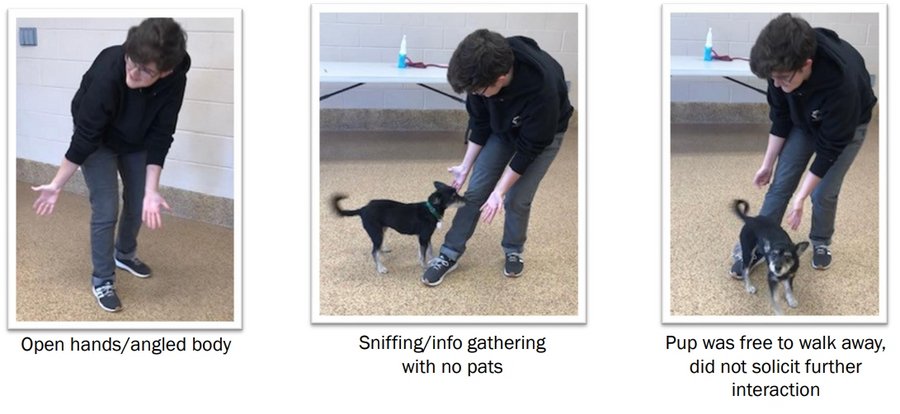
7 Things to Avoid
Below are common methods of interacting with dogs that can actually be quite uncomfortable for them. Most of these interactions pierce a dog's personal bubble and can make them feel trapped or threatened, potentially leading to a bite, even with a bonded owner - especially if they are being trigger stacked (dealing with multiple stressors at once). Fun fact: dogs can smell about a football field away; they don't need us to put our hands out in order to smell us and gather information about us. Two things are not shown, are direct eye contact, and squaring off. Standing in front of a dog and maintaining eye contact are extremely threatening whether done by humans or other dogs. Clear requests for attention include snout boops, pawing, or leaning into us. Please remember, dogs don't hug and kiss like we do. Licking can be sign of stress, or way of keeping the peace, but it's not typically a gesture of love.
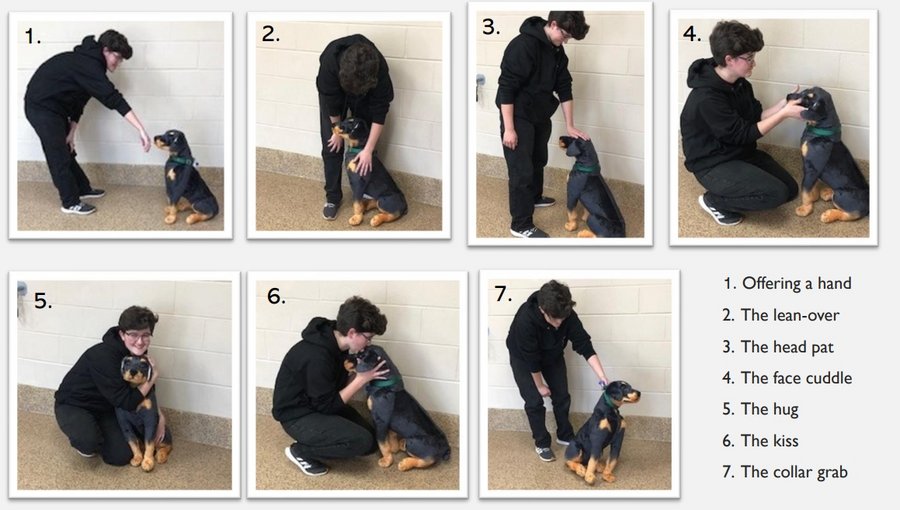
Now What?
Once your friend has shown interest and solicits attention (not just sniffing/information gathering), below are the safest spots to touch a dog. Dogs generally dislike being petted on the head, it can block their view and feel smothering. Keep the interaction brief to be sure it's appreciated. Consent tests are a great way to find out if a dog is enjoying the interaction or if the dog is saying ‘no.’ If after a few pats the dog walks away, that's a clear ‘no.’ If the dog paws you, nose-bumps, or leans into you, that's a ‘yes.’ If the dog is conflicted, assume that's a ‘no’ as well. Feeling conflicted isn't a pleasant feeling, wait for the next interaction/consent test to see if you get an enthusiastic ‘yes!’
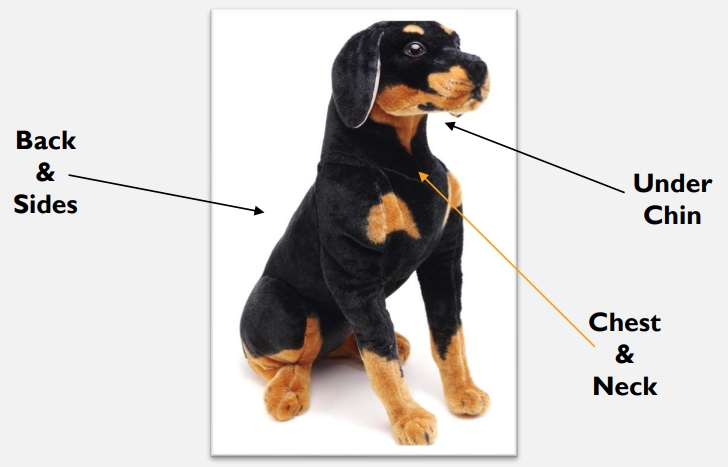
Body Language / Signals
Dogs vocalize, some more than others, but a great deal of their communication is done with their bodies. They use their eyes, ears, mouth, posture, tail, and even fur. Loose & wiggly dogs are generally relaxed, whereas stiff/tense dogs are often feeling stress & anxiety. Below are images of behaviors and gestures that provide us with important information. Some of these might surprise you! We'll begin with the ladder of aggression (distance increasing behaviors) to demonstrate the range of signals from subtle to blatant. Listen to the whisper (green) so they don't have to shout!

Stress Signals
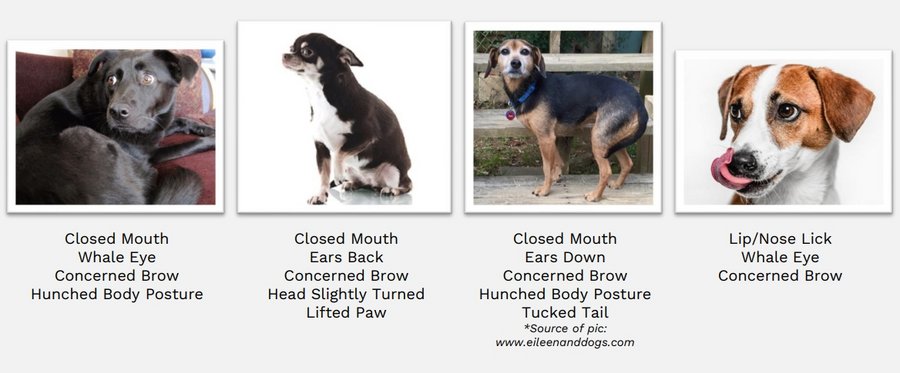
Stress Signals
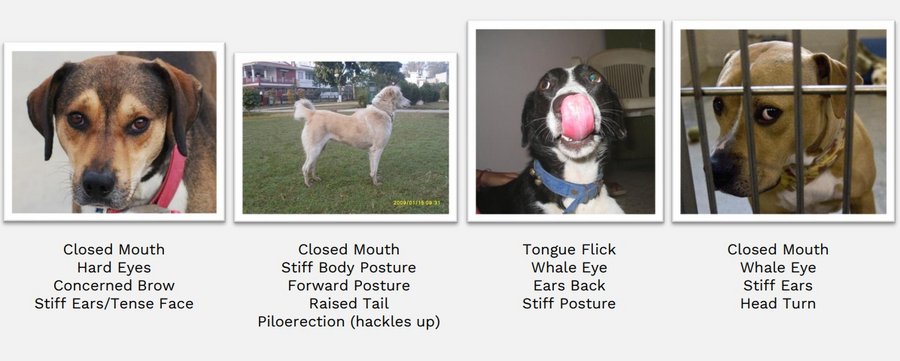
Stress Signals - One More!
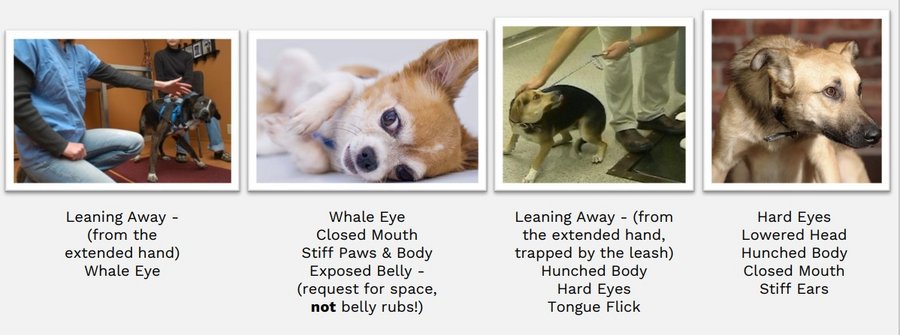
Relaxed Dogs
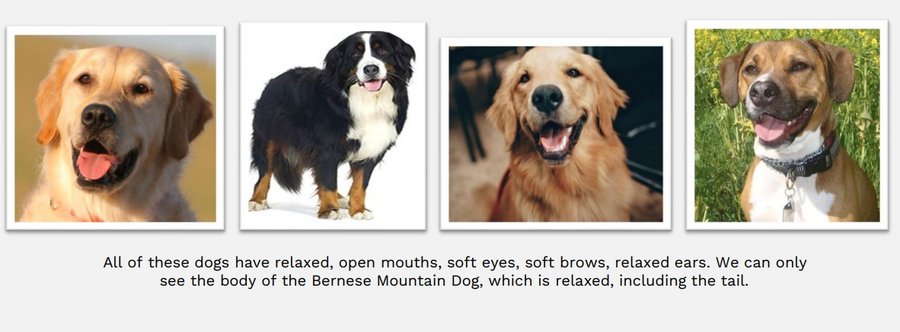
Why CONTEXT Is So Important
Myth Busting
As explained in the introduction, context includes the full body (eyes, ears, mouth, body, tail, posture, fur), as well as situational context (is the dog tethered or confined, in a crate, home or in a stressful environment, are kids around, chaos, noise). Context is so important because body language, similar to humans, can mean different things depending on what's happening around the dog. Have you ever laughed without thinking something was truly funny? Have you ever gotten ‘goosebumps’ from excitement as well as from fear? The next few pictures display body language that can often be misinterpreted - which can lead to dangerous interactions, especially for children.
1. Tail Wag
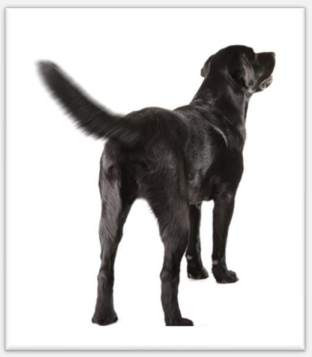
A wagging tail is an expression of arousal/excitement. It’s often thought to indicate a dog is happy and interested in interacting with us. However, dogs also wag their tails when they are nervous, agitated, or upset. To best understand what a dog is saying, look at context: the entire dog’s body, as well as what’s happening in the environment. When we assume a wagging tail is a happy dog, we risk interacting with a dog who may be asking for space instead of attention. This misunderstanding can lead to a bite.
2. Belly Rubs

Are these dogs saying the same thing? An exposed belly is often assumed to be an invitation for rubs n' pats, but an exposed tummy is not always an invitation for attention, sometimes it's actually a request for space. There isn't any situational context in these photos, so we don't know what's going on, but the dog on the left is requesting space. How can we tell? This dog's eyes are hard and brows are concerned, the mouth is stiff and mostly closed, the front legs are stiff and held together over the dog's body, the tongue is flicked. The dog on the right, however, is showing signs of being relaxed. This dog has an open mouth and relaxed jaw, relaxed paws that are open and floppy, and the eyes and brows are soft. When we reach out to touch dogs who are asking for space, we risk pushing a dog over threshold to a bite.
3. Yawning

These images provide more situational context which helps determine what each yawn means. The dog on the left is on a comfy couch and has a relaxed body, while the dog on the right is being held and looks awkward/uncomfortable. Additionally, the dog on the right is giving an exaggerated yawn, it's wider and showing more tension, with ears slightly back - this dog is asking to be left alone. Reaching out to pet a dog who is asking for space risks pressuring a dog to feel defensive and possibly bite.
4. Licking
This will be difficult for many to accept, but dogs do not kiss. Kissing and hugging are not natural for dogs, they use licking to communicate mostly feelings of worry or anxiety, and in a very general sense is a way of saying, ‘hey let’s be friends, I mean no harm.' A peace-keeping gesture, also termed ‘appeasement gesture’ or ‘calming signal’ - licking is used to avoid conflict or deescalate a potentially confrontational encounter. When we put our face in the face of a dog believing we are getting kisses instead of communication, we risk a bite, especially with dogs who are unfamiliar to us. When we have a strong bond with a dog, it's still something that's often tolerated instead of appreciated. Does this mean it's never affection? Maybe not, but it's important to remember that kissing is human behavior.
Is it a Kiss or a Dismiss: -Jennifer Shryock, BA, CDBC, Family Paws (dog bite safety and babies)
Excerpt: “Licking can be many things. Grooming, care taking, self-soothing, appeasement — but what about distance increasing or a cut off cue?” Read full article, with videos, here.
Kisses and Stress Signals - the following pictures show stress signals as a result of having their personal space invaded by a kiss. Two pictures also show a dog being physically held in place and/or leashed, effectively trapping and forcing a dog to endure an uncomfortable interaction without an escape route.
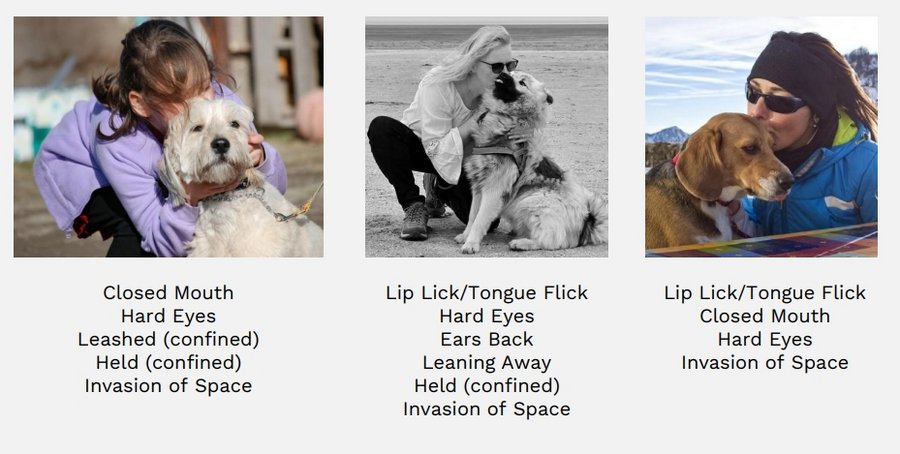
Questions
If you have any questions about safe dog meets at the shelter, or about body language & dog bite prevention in general, please feel free to email.
